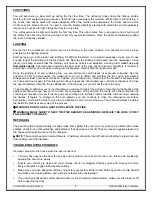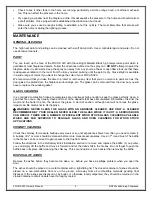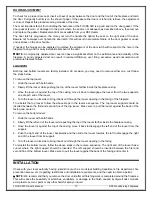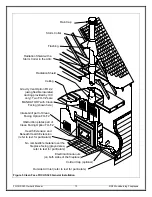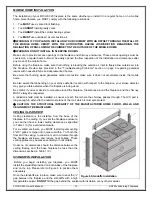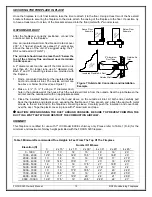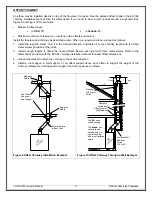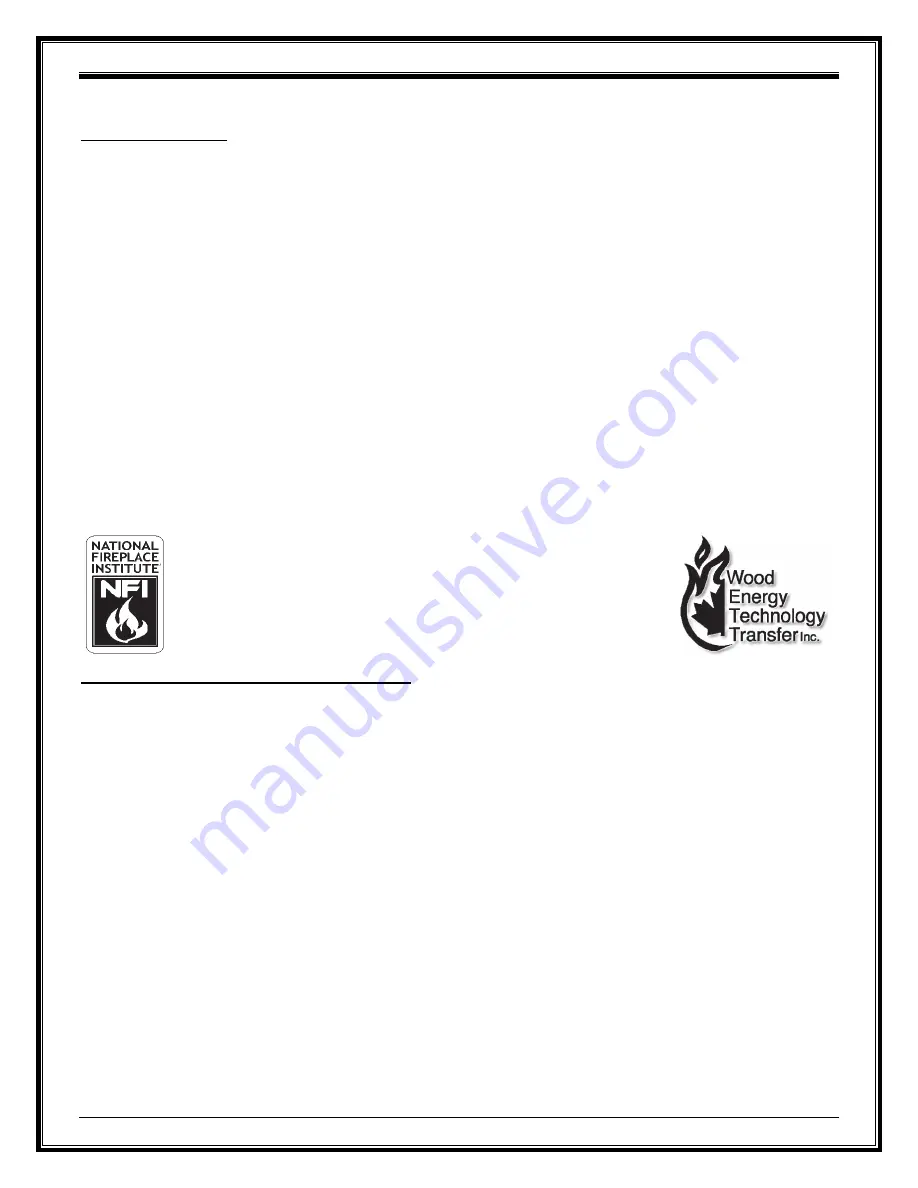
FOCUS 320 Owner's Manual
3
RSF Woodburning Fireplaces
SAFETY FIRST
DO'S AND DONT'S
If this fireplace is not properly installed, a house fire could result. For your safety, follow the installation
directions. Contact your local authority having jurisdiction (such as municipal building department, fire
department, fire prevention bureau, etc.) regarding restrictions and installation requirements, and the
need to obtain a permit.
To ANYONE using this fireplace: these
DO's
and
DONT's
are for your safety.
1.
DO
read this instruction manual before lighting your first fire.
2.
DO
burn seasoned wood fuel or densified fuel logs.
3. To avoid glass breakage,
DO NOT
slam the fireplace door.
4.
DO NOT
ever use gasoline, gasoline-type lantern fuel, kerosene, charcoal lighter fluid or similar liquids to
start or freshen up a fire in this fireplace. Keep all such liquids well away from the fireplace while it is in use.
5.
DO NOT
overfire the fireplace. If you are unable to slow down the burn rate of the fire or if the
chimney connector behind the top louver glows red, you are overfiring the fireplace.
6.
DO operate the fireplace with the door fully closed
. If the door is left partly open, gas and flame can be
drawn out of the fireplace opening, creating both fire and smoke hazards.
7.
DO
keep all combustible materials (furniture, firewood, etc.) at least 4' away from the front of the fireplace.
8.
DO NOT
use a fireplace grate or other products not specified for use with this fireplace.
NOTE
: We strongly recommend that our products be installed and
serviced by professionals who are certified by the National Fireplace
Institute in the U.S. or by Wood Energy Technology Transfer Inc. in
Canada.
CREOSOTE: FORMATION AND REMOVAL
When wood is burned slowly, it produces tar and other organic vapors which combine with the expelled moisture
from the wood to form creosote. The creosote vapors can condense in the relatively cool chimney of a slow
burning fire. When ignited, this creosote makes an extremely hot fire. The chimney should be inspected
periodically during the heating season to see if a creosote build-up has occurred. If a significant layer of creosote
has accumulated (1/4" or more), it should be removed to reduce the risk of chimney fire.
WARNING: BURN DRY WOOD ONLY.
DO NOT BURN: DRIFTWOOD, TREATED WOOD, COAL, GARBAGE, OR PLASTIC.
Do not use construction scraps (e.g. 2x4 or plywood scraps) as your only supply of fuel as you can overheat and
seriously damage the fireplace. We do not recommend using wax fuel logs (e.g. Duraflame) in this fireplace
because it will dirty the glass. If you choose to use them, do not use more than one at a time and do not poke or
stir the log while it is burning. Use only firelogs that have been evaluated for fireplace use. In Canada, they should
meet the requirements of ULC/ORD-C127-M1990. Refer to the firelog warnings and caution markings prior to
use.








